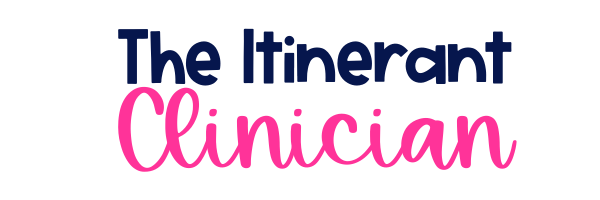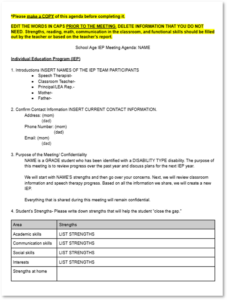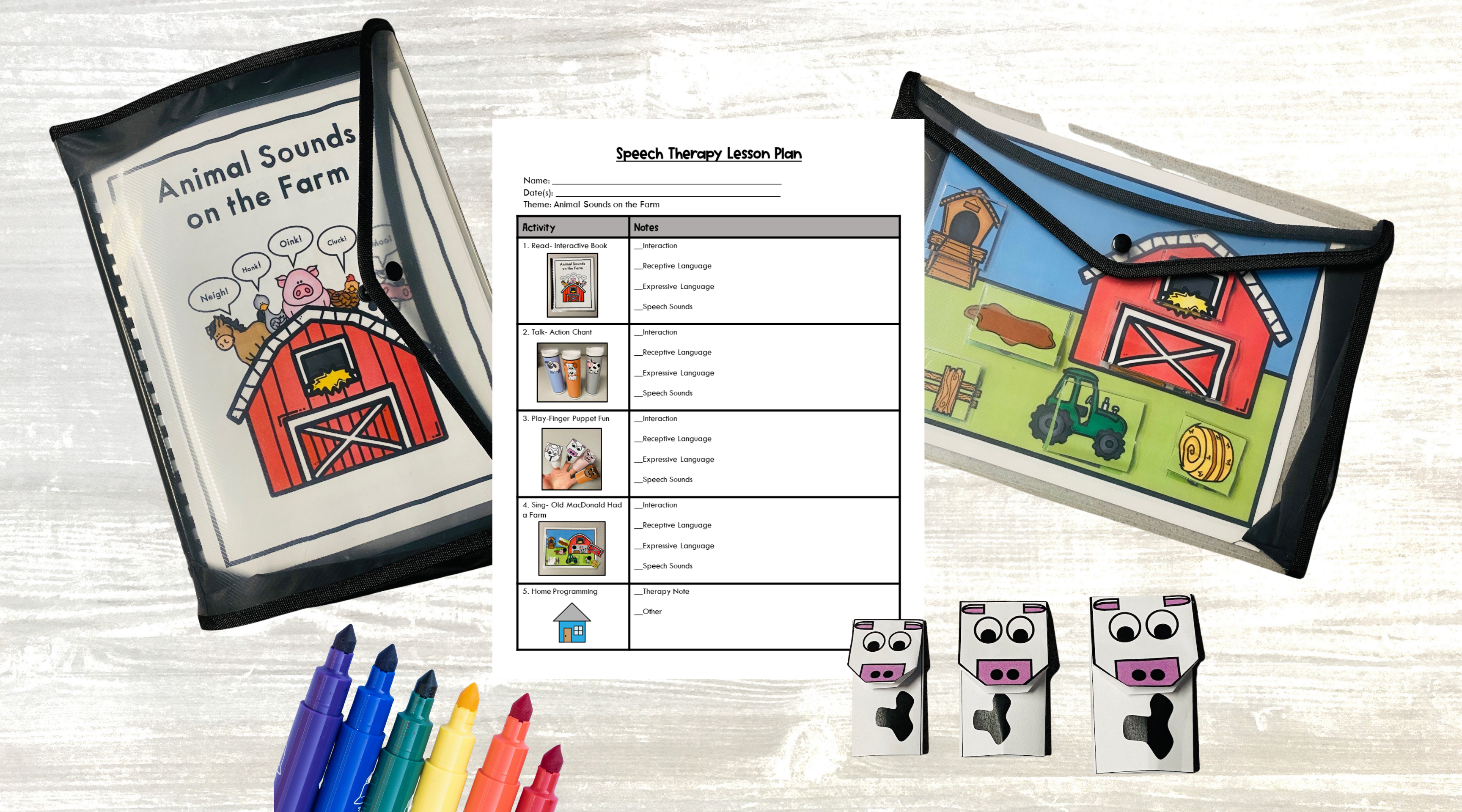Sharing is caring!
If you’re a new speech-language pathologist (SLP), chances are you’ll be writing a speech therapy IEP at least once a week. But let’s be honest—when you’re new to the field, navigating IEPs can feel daunting. Maybe you’ve hesitated to ask seasoned colleagues your questions, worried it might make you look inexperienced. I’ve been in your shoes, feeling the same uncertainty. At first, I tried to figure it all out through trial and error, or by frantically searching for answers. Today, I want to save you that struggle. Let’s break it down together and make sense of it all.
Before we dive in, are you looking for an IEP meeting agenda template to guide you through the meeting? Don’t waste time creating your own. Save time with this speech therapy IEP meeting agenda editable template by purchasing the SLP Templates. Click on the picture below to see an example of page 1 of the IEP meeting agenda template.
What Is a Speech Therapy IEP?
An Individualized Education Program (IEP) is much more than just a document; it’s a legal roadmap that outlines the services, goals, and accommodations a student with special needs requires to thrive in school. Governed by the Individuals with Disabilities Education Act (IDEA), the IEP is tailored to each student’s specific needs—and speech therapy services often play a significant role within it.
Here are the key components of a speech therapy IEP:
- Present Levels of Performance (PLOP): This section serves as a snapshot of the student’s current abilities, including their speech and language skills.
- Goals: Clearly defined, measurable objectives that focus on improving areas like articulation, expressive language, or social communication.
- Accommodations and Modifications: Tools or adjustments that enable the student to participate in classroom activities successfully, such as visual supports or alternative communication methods.
- Service Delivery: Specific details about the type, frequency, and setting of speech therapy sessions.
- Progress Monitoring: A system for tracking and reporting the student’s progress toward their speech therapy goals.
6 Tips for Explaining the Speech Therapy IEP to Parents
For many parents, the IEP process can feel overwhelming and laden with unfamiliar terminology. Your ability to break it down—particularly in the context of speech therapy—is key to building trust and fostering collaboration. Here’s how to do it effectively:
1. Ditch the jargon.
While you might find terms like “articulation goals” and “PLOP” second nature, these can be confusing for parents. Translate them into everyday language. For instance:
- Instead of “PLOP,” say: “This is a summary of where your child’s speech and language skills are right now.”
2. Walk through the IEP step by step.
Breaking the speech therapy IEP into digestible sections helps parents feel less overwhelmed. For example, I break my IEPs into 4 main sections. (All of these sections are included in the editable IEP Meeting Agenda template, which is part of the Ultimate SLP dashboard.)
- Strengths and parent concerns
- Current academic performance
- Goal review and present levels for speech therapy
- Developing a new IEP base on what was shared. This includes making new goal recommendations, discussing frequency of services that will be provided, accommodations that will be provided for the child, and progress monitoring/reporting.
3. Highlight the student’s strengths.
IEP meetings often focus heavily on the student’s challenges, which can feel discouraging for parents. To create a more positive and collaborative atmosphere, make a point to highlight the student’s strengths. Every child has unique qualities, skills, or interests worth celebrating. Starting the meeting by discussing these strengths sets a supportive tone and encourages parents to engage more openly in the conversation.
4. Provide resources beyond the school setting.
Parents often benefit from having access to additional resources that support their child’s communication growth outside of school. Share written guides, curated online tools, or information about community programs. For families with younger children, consider offering schedules for local playgroups, library story times, or other activities that foster social and language development. These practical suggestions help parents feel equipped to support their child beyond the classroom.
5. Encourage interaction.
Invite questions throughout the conversation: “Does this make sense?” or “What do you think about these speech therapy goals?” By creating space for dialogue, you help parents feel valued and heard.
6. Explain the IEP timeline.
Clarify the flexibility of the IEP to reassure parents. Let them know that while the IEP is typically valid for one year, they can request a meeting at any time if new concerns arise. Emphasize that the IEP is a living document that can adapt as the child’s needs evolve—a critical feature in tracking progress, especially in speech therapy.
Why Speech Therapy and the IEP Go Hand in Hand
Speech therapy often plays a critical role within an IEP because communication skills are foundational to a student’s success. From helping a child articulate sounds to improving language sills, speech therapy goals are designed to address a wide range of needs.
Final Thoughts
As an SLP, your role extends beyond providing therapy. You’re also a guide, an advocate, and an educator for families. Taking the time to explain the IEP thoroughly and compassionately, especially its speech therapy components, ensures parents feel confident about their child’s educational journey. Remember: the IEP isn’t just a document; it’s a collaborative roadmap to success.
Ready to streamline your IEP paperwork? Explore our professionally designed agendas and templates to save time and stay organized.
If you want to get started with a FREE Articulation Evaluation Checklist, click here. Click on the picture below to see an example.












